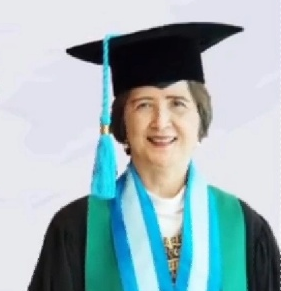Correlation between SREBP-1c and Prominent Nucleoli Hepatocytes of Type 2 Diabetic Rat Model Induced by Dietylnitrosamine
DOI:
https://doi.org/10.28932/jmh.v5i2.6076Keywords:
type 2 DM, diethylnitrosamine, HCC, streptozotocin, Wistar ratsAbstract
Type 2 Diabetes Mellitus (T2DM) demonstrates relative risk of cirrhosis towards livercancer. Although the relationship between of type 2 diabetic and cirrhotic toward HCC has beensuggested, the association between SREBP-1c and the number of prominent nucleoli hepatocyteshas not clearly explored. This study aims to prove the correlation between those variables byusing male Wistar rat model given fat diet continued with administration of Streptozotocininjections twice in low dosage and an injection of dietylnitrosamine once a week for 10 weeks. Atweek 16, they were sacrificed, the fresh liver tissue was processed for examining the expressionof SREBP-1c, while the fixative paraffin block was sliced and stained with Hematoxylin Eosin tocount the number of prominent nucleoli hepatocytes. The western blotting result demonstratedincreasing level of SREBP-1c in diabetic rat significantly. The liver sections showed nodulesconsisting of pleomorphic cells, inflammatory cells, and prominent nucleoli hepatocytes. Thecorrelation between level of SREBP-1c and total number of prominent nucleoli hepatocytes wasmeasured with non-parametric correlation method statistically. It demonstrated coefficientr=0,435 with p value=0,037. It is concluded that increasing number of prominent nucleolushepatocytes related to enhancing level of SREBP-1c in the process of T2DM towardsHepatocellular Carcinoma.Downloads
References
Safiri S, Karamzad N, Kaufman JS, Arielle Wilder Bell, Seyed Aria Nejadghaderi,. Sullmanet MJM et al. Prevalence, Deaths, and Disability-Adjusted-Life-Years (DALYs) Due to Type 2 Diabetes and Its Attributable Risk Factors in 204 Countries and Territories, 1990-2019: Results from the Global Burden of Disease Study 2019. Front Endocrinol. 2022; 13:838027.
Saeedi P, Petersohn I, Salpea P, Malanda B, Karuranga S, Unwin N, et al. Global and Regional Diabetes Prevalence Estimates for 2019 and Projections for 2030 and 2045: Results from the International Diabetes Federation Diabetes Atlas. Diabetes Res Clin Pract. 2019; 157:107843.
Roth GA, Abate D, Abate KH, Abay SM, Abbafati C, Abbasi N, et al. Global, Regional, and National Age-Sex-Specific Mortality for 282 Causes of Death in 195 Countries and Territories, 1980–2017: A Systematic Analysis for the Global Burden of Disease Study 2017. Lancet. 2018; 392(10159):1736–88.
Khan MAB, Hashim MJ, King JK, Govender RD, Mustafa H, Kaabi J. Epidemiology of Type 2 Diabetes – Global Burden of Disease and Forecasted Trends. J Epid Glob Health. 2020; 10 (1): 107–11.
Simon TG, King LY, Chong DQ, Nguyen LH, Ma Y, Vo PT, et al. Diabetes, Metabolic Comorbidities, and Risk of Hepatocellular Carcinoma: Results from Two Prospective Cohort Studies. Hepatology. 2018; 67 (5):1797–806.
Hamouda HA, Mansour SM, Elyamany MF. Vitamin D Combined with Pioglitazone Mitigates Type-2 Diabetes-Induced Hepatic Injury Through Targeting Inflammation, Apoptosis, and Oxidative Stress. Inflammation. 2022; 45(Suppl 2).
Zhang C, Liu S, Yang M. Hepatocellular Carcinoma and Obesity, Type 2 Diabetes Mellitus, Cardiovascular Disease: Causing Factors, Molecular Links, and Treatment Options. Front Endocrinol (Lausanne). 2021;12: 808526.
Katherine A McGlynn, Jessica L Petrick , Hashem B El-Serag. Epidemiology of Hepatocellular Carcinoma. Hepatology. 2021;73(Suppl 1):4-13.
Yang JD, Hainaut P, Gores GJ, Amadou A, Plymoth A, Lewis RR. A global view of hepatocellular carcinoma: trends, risk, prevention, and management. Nat Rev Gastroenterol Hepatol. 2019;16 (10):589–604.
Mantovani A, Targher G. Type 2 diabetes mellitus and risk of hepatocellular carcinoma: spotlight on nonalcoholic fatty liver disease. Ann Transl Med. 2017;5(13): 270.
Li X, Wang XC, Gao P. Diabetes Mellitus and Risk of Hepatocellular Carcinoma. BioMed Res Inter. 2017; 1-10
Singal AG, Lampertico P, Nahon P. Epidemiology, and surveillance for hepatocellular carcinoma: new trends. J Hepatol. 2020;72(2): 250-61.
Ferre P, Phan F, Foufelle F. SREBP-1c and lipogenesis in the liver: an update. Biochem J. 2021;478 (20): 3723–39.
Li N, Zhou Z, Shen Y, Xu J, Miao HH, Xiong Y, et al. Inhibition of the SREBP pathway suppresses hepatocellular carcinoma through repressing inflammation. Hepatology. 2017; 65:1936-47.
Xu X, So JS, Park JG, Lee AH. Transcriptional Control of Hepatic Lipid Metabolism by SREBP and ChREBP. Semin Liver Dis. 2013; 33:301–11.
Hui Q, Changzhen F, Qingping L Progress in the Study of Sterol Regulatory Element Binding Protein 1 Signal Pathway. J Pharma Pharma Sci. 2020; 4:183.
Kim HS, El-Serag HB. The Epidemiology of Hepatocellular carcinoma in the USA. Curr Gastroenterol Rep. 2019;21(4):17.
Cruz D, Pasquarelli-do-Nascimento N.S, Oliveira G, Magalhães ACP. Inflammasome-Mediated Cytokines: A Key Connection between Obesity-Associated NASH and Liver Cancer Progression. Biomedicines 2022; 10: 2344.
Margini C, Dufour JF. The story of HCC in NAFLD: from epidemiology, across pathogenesis, to prevention and treatment. Liver Int. 2016; 36:317-24.
Noureddin M, Rinella ME. Nonalcoholic Fatty liver disease, diabetes, obesity, and hepatocellular carcinoma. Clin Liver Dis. 2015; 19:361-79.
Portillo-Sanchez P, Bril F, Maximos M, Lomonaco R, Biernacki D, Orsak B et al, High prevalence of nonalcoholic fatty liver disease in patients with type 2 diabetes mellitus and normal plasma aminotransferase levels. J Clin Endocrinol Metab. 2015; 100:2231-38.
Sidikjanovna TD, Nodirbek HG, Gulomjon NM, Fayzullo FS. Histological Structure of the Liver and Its Role in Complex Functions. IJEAIS. 2020;4 (8): 62-65
Atmodjo WL, Larasati YO, Isbandiati D and Mathew G. Curcuminoids Suppress the Number of Transformed-Hepatocytes and Ki67 Expression in Mice Liver Carcinogenesis Induced by Diethylnitrosamine. J Can Sci Res. 2018;3(2):1-6
Atmodjo WL, Larasati YO, Jo J, Nufika R, Naomi S and Winoto I. Relationship between Insulin-Receptor Substrate 1 and Langerhans’ Islet in a Rat Model of Type 2 Diabetes Mellitus. In Vivo. 2021; 35(1):291-7
Vatandous N, Rami F, Salehi AR, Khosravi S, Dashti G, Eslami G, et al. Novel High-Fat Diet Formulation and Streptozotocin Treatment for Induction of Prediabetes and Type 2 Diabetes in Rats. Adv Biomed Res. 2018; 7:107
Magalhães DA, Kume WT, Correia FS, Queiroz TS, Allebrandt Neto EW, Santos MP, et al. High-fat diet and streptozotocin in the induction of type 2 diabetes mellitus: A new proposal. An Acad Bras Cienc. 2019; 91(1): 1-14.
Hewitson T.D., Wigg, B., Becker, G.J. Tissue Preparation for Histochemistry: Fixation, Embedding, and Antigen Retrieval for Light Microscopy. In: Hewitson, T., Darby, I., editors. Histology Protocols. Methods in Molecular Biology. Totowa, NJ. Humana Press; 2010. p 611.
Dutta S, Mishra SP, Sahu AK, Mishra K, Kashyap P, Sahu B. Hepatocytes and Their Role in Metabolism, In: Katherine Dunnington editor. Drug Metabolism. 2021
Van De Vlekkert D, Machado E, d'Azzo A. Analysis of Generalized Fibrosis in Mouse Tissue Sections with Masson's Trichrome Staining. Bio Protoc. 2020;10(10):e3629. Published 2020 May 20. doi:10.21769/BioProtoc.3629
Setiawan A. Instrumentation & Biomolecular Technique Western Blotting. Department of Biomedic, Medical Faculty, Brawijaya University, Malang. 2018
Furman BL. Streptozotocin-induced diabetic models in mice and rats. Curr Protoc. 2021;1(4):78
Chen IY, Agostini-Vulaj D. Hepatocellular carcinoma overview. 2022; Pathology Outlines.com. [Cited April 20, 2023]. Available from: https://www.pathologyoutlines.com/topic/livertumorHCC.html.
Alqahtani A, Khan Zr, Alloghbi A , Ahmed TSS, Ashraf M, Hammouda DM. Hepatocellular Carcinoma: Molecular Mechanisms and Targeted Therapies. Medicina (Kaunas). 2019; 55(9):526.
Downloads
Published
How to Cite
Issue
Section
License
Copyright (c) 2023 Wahyuni L Atmadja, Erna Kristiani, Stella Marleen, Veli Sungono, Young Larasati, Kevin Feraldy

This work is licensed under a Creative Commons Attribution-NonCommercial 4.0 International License.
Authors who publish with this journal agree to the following terms:
- Authors retain the copyright and grant the journal right of first publication with the work
simultaneously licensed under a Creative Commons Attribution-NonCommercial 4.0 International License that allows others to share the work with an acknowledgement of the work's authorship and initial publication in this journal. - Authors are able to enter into separate, additional contractual arrangements for the nonexclusive distribution of the journal's published version of the work (e.g., post it to an institutional repository or publish it in a book), with an acknowledgement of its initial publication in this journal.
 This work is licensed under a Creative Commons Attribution-NonCommercial 4.0 International License.
This work is licensed under a Creative Commons Attribution-NonCommercial 4.0 International License.















